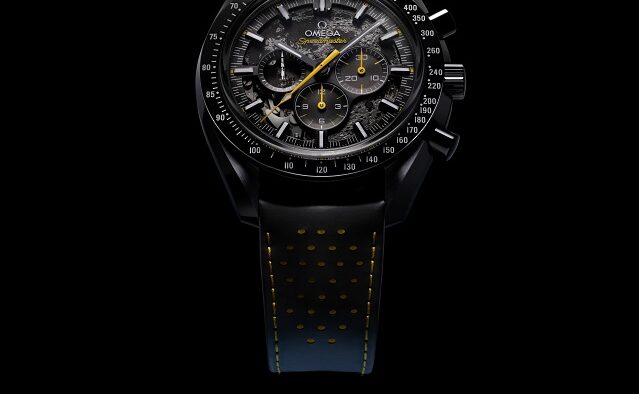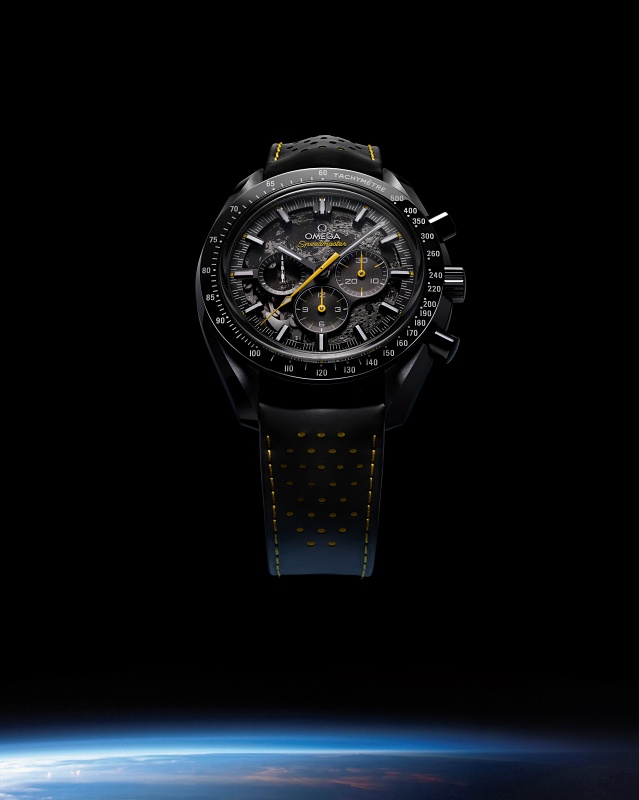Omega Orbits The Apollo 8 Story With A New Dark Side Of The Moon
Share

Pay tribute to the Apollo 8 Story with the newest Omega Speedmaster
History was made when Apollo 8 became the first human mission to ever orbit the Moon in 1968. On the pioneering mission, each astronaut was equipped with an Omega Speedmaster, an integral tool throughout NASA’s lunar campaign. This year, Omega pays tribute to the story with the new Speedmaster Dark Side of the Moon. 
The Original
Moreover, at Omega, the first Speedmaster Dark Side of the Moon Apollo 8 timepiece was released in 2018, marking the 50th anniversary of the mission. This time, the brand returns to its watchmaking launchpad, elevating the same design with an even finer level of detailing and refinement.
Creating a unique aesthetic throughout the design, the watch’s Calibre 3869 features a laser-ablated Moon relief on the blackened main plate and bridges. Just like the Moon, this movement reveals two different sides. The dial-side represents our view of the lunar surface, as seen from Earth, while the back of the watch shows the dark side that only astronauts get to see.
A Piece Of The Moon On Earth
The Moon-decorated movement can also be seen through the watch’s skeletonized dial, which is crafted from black anodized aluminium. When creating the 44.25mm case, the polished bezel, and the caseback, Omega used separate pieces of black ceramic while also filling the tachymeter scale with bright white “Grand Feu” enamel.
Another new touch is the patent pending small-seconds hand at 9 o’clock. This has been engineered from Grade 5 Titanium and shaped like NASA’s famous Saturn V rocket. The powerful 3D structure has been obtained by laser turning, while the colours are achieved with white varnish, ablation, and laser blackening.
Famous Last Words
On the caseback, a series of engravings has been inscribed, including “WE’LL SEE YOU ON THE OTHER SIDE,” the final words spoken to ground control by Command Module Pilot Jim Lovell, just before the Apollo 8 mission disappeared to the far side of the Moon, and out of radio contact for the first time.
More information can be found on the Official Omega Website.















